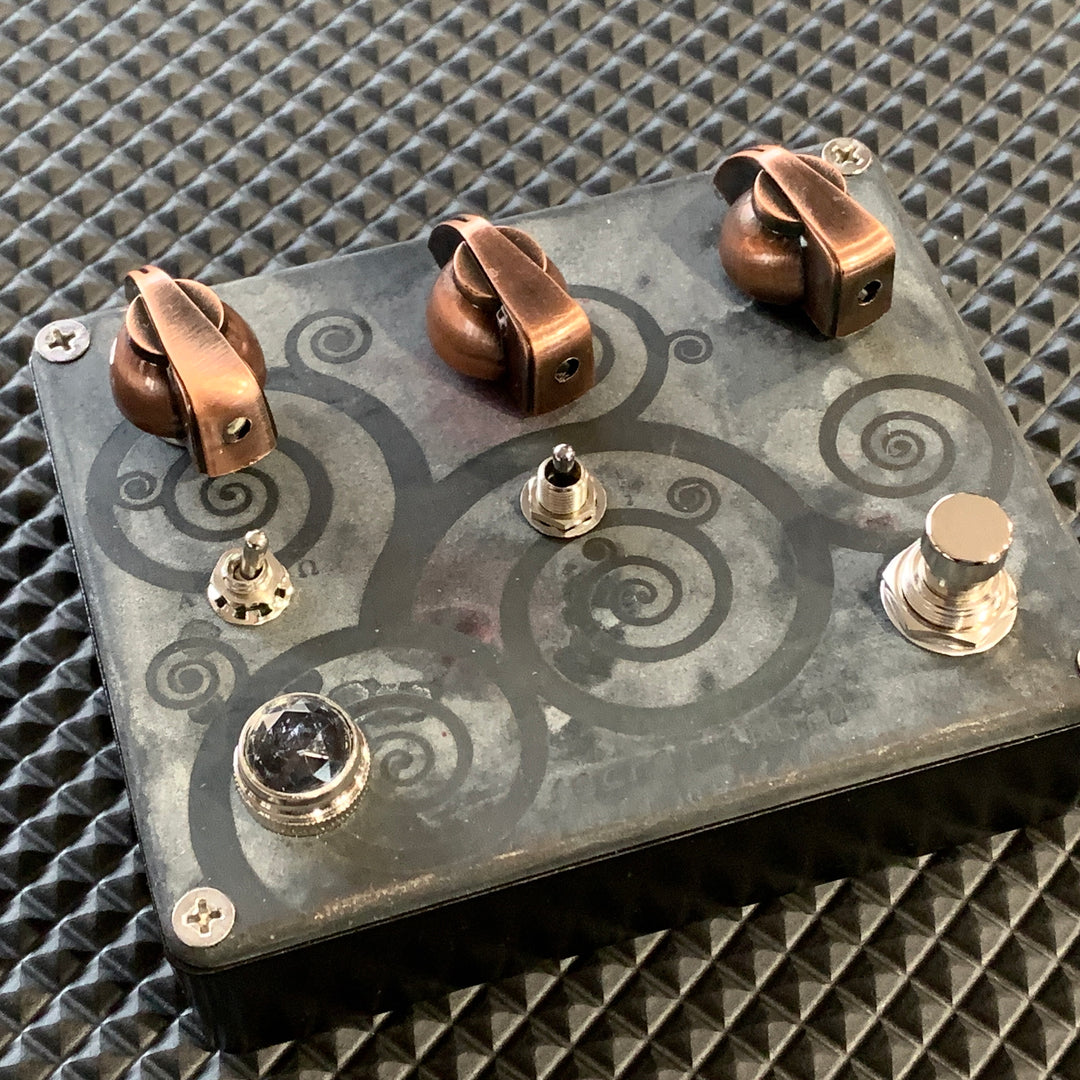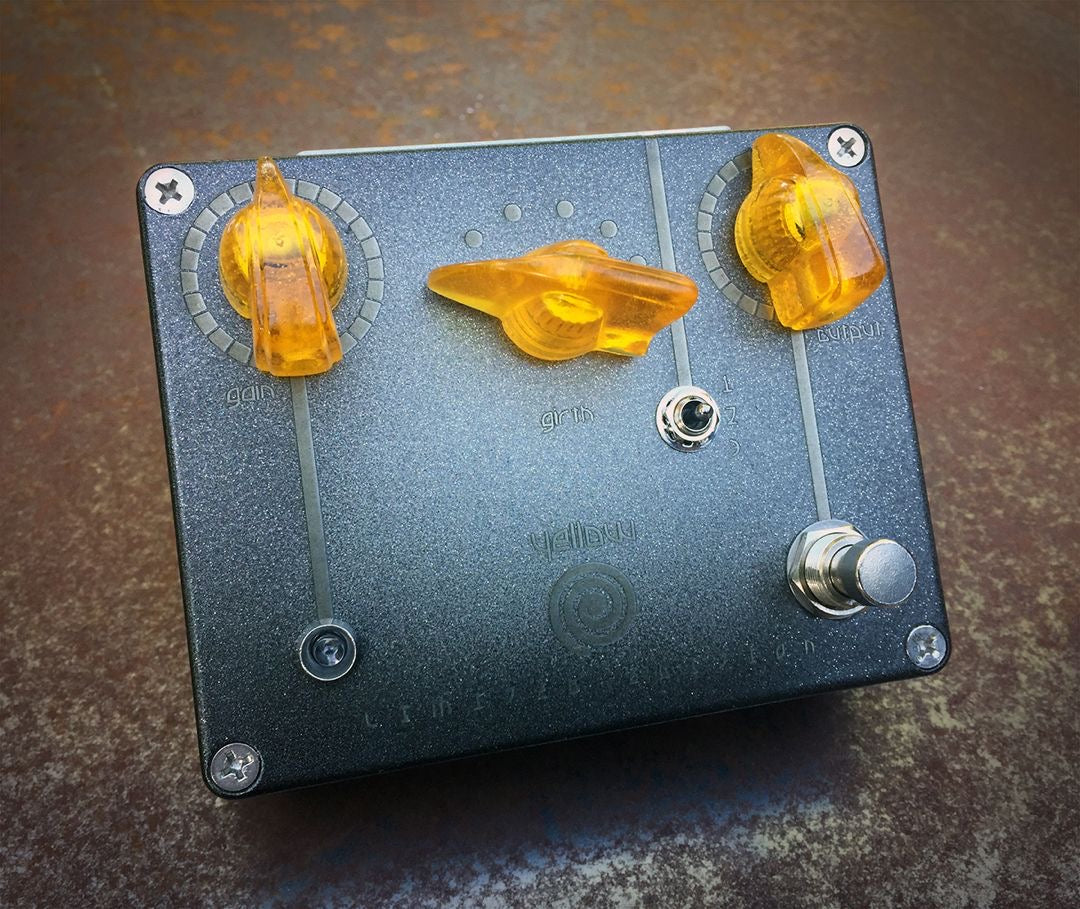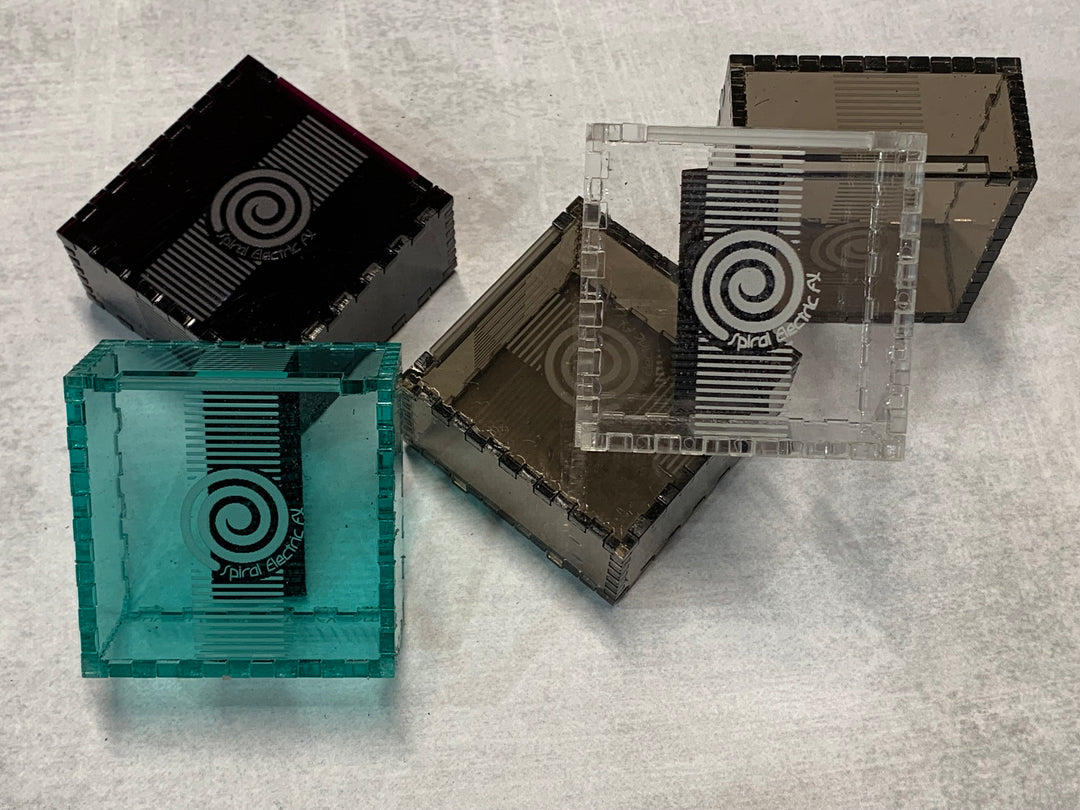Allora High-Gain Darlington Fuzz
- Low stock - 1 item left
- Backordered, shipping soon
The Allora has its beginnings in requests from players to make a higher-gain version of the Brute. To explore this path I started experimenting with Darlington transistors. These transistors have incredibly high Hfe measurements in the 10’s of thousands, as opposed to the low-to mid hundreds of normal transistors. I’m using two Darlington’s in the Allora, and this amount of gain required substantial reworking of the input, output, and Detail controls; as well as reconfiguring the overall transistor arrangement (BC108C, BC549, MPSA12’s, 2N5089). I also opened up the Bias control to increase gating so that you can control noise, or not!
However, all of this experimentation and adjusting did not yield a “higher-gain version of the Brute,” it turned into - something else. The Allora is more compressed, wilder, ruder, feeds-back, sputters, sags, spits, woofs, growls, and even horns(?), like no other fuzz I make. Some settings remind me of a Muff, other settings remind me of a Buzzaround.
The Allora LOVES to be paired with a loud amp, and the generous Output allows it to hit the front end of an amp pretty hard - unity is right around noon. The Focus Toggle allows you to shave off some low-end to make it play nice with an already dirty amp channel. The three-way Texture toggle has the following options:
1 - 80n
2 - Blower (straight transistor tone)
3 - Silicon 1N914 diodes
The first setting uses silicon diodes that Christopher from SHOE Pedals turned me on to.
The second Blower setting is something that I started doing on a few one-offs that I have come to love. It is just the straight raw tone of the transistors clipping, it can get a little bass heavy so try using the Focus toggle to tame it.
The third setting is our 80n, it has a little higher headroom, and it scoops a tiny bit of the lower-mids, this allows for a smoother tonal transition between fuzzy and “clean” when using the guitar volume knob.
A note or two about the expanded Bias control:
I increased the range on the bias to help control some of the inherent noise that comes with the increased gain of the Darlington transistors. Right around 2:00 on the Bias you can hear the gating kick-in and the noise floor is drastically improved. If the gating cuts-off your sustain too abruptly, try moving the Bias back just a little, you will find a sweet-spot depending upon your guitar pickups that is a good balance between gating and sustain.
Or you can just mess with the Bias to find all kinds of crazy sounds, noise be damned! For horn-like sounds where your pick attack is completely removed, try the 4:00 range on the Bias. For aggressive, more OD-ish sounds keep the Bias in the 11:00 range.
Ironically, one of my favorite settings on the Allora is lower-gain. Set the Output in the 3:00 range so it acts like a boost, then bring up the Gain and Bias to around 10:00-11:00 to “fill-out” the sound. This setting sounds phenomenal with an amp channel that is on the verge of break-up. I use this setting a lot on both my AC30 and Thunderverb 50 to get a great clear rhythm grind.
To sum up, the Allora is a bit different from the fuzzes I normally gravitate to. It isn’t “open” or “transparent” in any way. It wants to do what it wants to do, and you kind of have to ride the wave.
SPECS
Input: 1/4” TS Unbalanced - 500 kΩ
Output: 1/4” TS Unbalanced - 1 kΩ
Current Draw: 7 mA
Pedal Dims: 4.7" L x 3.7" W X 2" H (119.50mm L x 94.00mm W X 50.00mm H)
NOTE: Our pedals do not have a battery option. Batteries are bad for the environment and there are a ton of excellent power supplies on the market.














